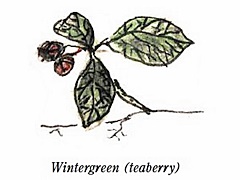
Welcome to Hemlock and Canadice Lakes!
Barns Businesses Cemeteries Churches Clinton & Sullivan Columns Communities Documents Events Time Line Fairs & Festivals Farm & Garden Hiking Homesteads Lake Cottages Lake Scenes Landscapes Library News Articles Old Maps Old Roads & Bridges Organizations People Photo Gallery Podcasts Railroad Reservoir Schools State Forest Veterans Videos
|
“Nature in the Little Finger Lakes” by Angela Cannon Crothers |
|
|
A Brief Field Guide to Evergreens Angela Cannon-Crothers December 2017 If you were a cone-bearing tree, having perfected your whorl-like branches, protected your needles with a waxy coat, produced both male and female cones to perpetuate your race, all while mastering the fine art of photosynthesis in a warm, humid, carbon-rich atmosphere that still succumbed, regardless, to months of darkness in some areas of the globe primeval, and, after hundreds of millions of years of fine-tuning such amazing hardiness and sublime skills, along comes a flowering, oddly seed-bearing tree, well, you might think flowering trees a bit gaudy and frou-frou-would you not? The evolution of Gymnosperms, of which conifers belong, began at least 280 million years ago and lasted through the Triassic, Jurassic, and Cretaceous epochs of earth’s history. They also lasted through the biggest mass extinction known on the planet (which was not the dinosaurs, by the way). You might also be aghast at having your brilliant narrow needles, so advanced in their form as to provide 100 times the surface area of a deciduous tree with added bonuses like being able to reduce snow damage without costing your body entire branches in a snow storm referred to as “rolled up leaves” when, of course, your ancestors had created these sunlight-catching forms millions of years before such flashy petal-pushing, seed-bearing, flat-leaved cousins were even a twinkle in any cell’s eye. Now is the season of deep green against grey sky and bare limbs. Most conifers are evergreen, though not all. True evergreens do drop their needles, just not all at once, so the illusion of deep green, combined with the ability to photosynthesize later in the season, and sometimes earlier than others, is affixed. Evergreen trees and shrubs represent the endurance of life itself through dark epochs of earth time and dark seasons of ours. The following is a little guide of some favorite evergreens I enjoy finding in the woods, or collecting for holiday cheer. - The longer green needles are found on white and red pine. White pine, known as The Great Tree of Peace by the Haudenosaunee, have a greyish cast to their bark and delicate needles with five to a bundle-like fascicle. The red pine needles are stiffer and longer, two to a fascicle, with a more puzzle-like red bark. Red pine needles are what I use to make pine needle basket containers which my daughter says looks so tedious to make, to which I reply, “easier than white pine.” White pine, however, makes a lovely winter tea when steeped for several minutes. - The most common Christmas trees are blue-green Fraser fir (less commonly known as she-balsam), balsam fir, Douglas fir, Norway spruce, and the less pleasantly aromatic white spruce, which smells a bit like cat urine to me. Being a Christmas tree trimmer is hard work. I was a tree trimmer once in northern Minnesota in plantations of balsam trees as far as the eye could see. The requirement was to shear two trees a minute, top to bottom, 360 degrees round, from dawn to dusk, with long machetes in each hand. By the end of the first week my arms were so sore, and my hands so blistered, I could hardly lift a glass of water to my mouth. I have a great appreciation for a well-manicured tree. - Wintergreen is a tiny little waxy-leaved herb less than four inches off the forest floor. Their aromatic smell is from the compound methyl salicylate, used in chewing gums and mint flavorings, but also prized for medicinal properties used in treating rheumatism, pain, sore throats, and headaches. I love the little pink berries and eat them right on the trail. Like an apple cut across the center, or a starfish in its form, there is a distinctive five-pointed shape at the end of each fruit. If I collect enough and string them with needle and thread so the star pattern faces out, they dry into beads that resemble little rose buds. The leaves and berries also make a wintergreen-scented and pink-tinted tea. - Scale-like leaves seem to sing of ancient species. Swathed in mystic qualities, the white cedar, or eastern arborvitae, is said to be The Tree of Life. Deer love to eat it and rely on it for winter food and shelter. It is one of my favorite greens to add to smudge sticks or slide into holiday greeting cards for its scent. - Lycopodium species, like tree club moss—also known as princess pine or running pine—resemble tiny Christmas trees. Like the conifers, they date back to the Paleozoic times some 340 million years ago. Such darling little model-sized evergreens are often gathered for use in holiday wreaths, but the slow-growing moss can easily be decimated when over-harvested. In the magical spirit of the season, better to make fairy-sized decorations and adorn the mosses where they stand.
|
||
|
Editor’s Note: Angela Cannon Crothers is a naturalist and writer who teaches at Finger Lakes Community College and with The Finger Lakes Museum. Here are some columns that she has written about the Little Finger Lakes. Her columns also appear in the Lake Country Weekender newspaper.
|
||
